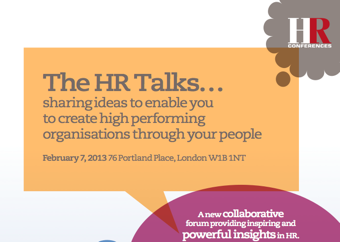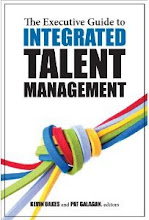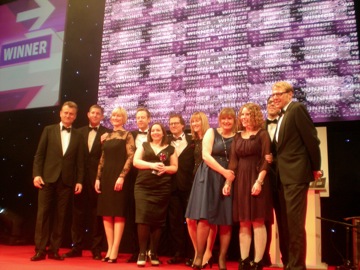 I don't want you to think that I didn't enjoy the conference by the way - most of my criticisms are down to the limitations of traditional events.
I don't want you to think that I didn't enjoy the conference by the way - most of my criticisms are down to the limitations of traditional events.- Darren Hockaday, HR director, London Overground Rail Operations - employee engagement and customer services
- Amanda Menahem, HR director, Hastings Direct - talent strategy
- Jayne Billam, director of HR, University of Lincoln & Andrew Walsh, head of resources, The Pensions Trust - performance management and reward
- David Smith, group HR and communications director, LV= - Web 3.0 recruitment technology
- Sarah Perkins, UK healthy living manager, American Express - data for health and wellbeing
- Janet Burr, HR director, Thames Water & Valerie Hughes D’Aeth, group HR director, Amey - change management
- Simon Brown, head of learning transformation and group learning, Lloyds Banking Group & Paul McGhee, leadership and development manager, City of Edinburgh Council - innovative, value-added L&D
- Dr Benjamin Reid, head of the creative industries programme at The Work Foundation and Professor Adrian Furnham of the department of psychology at University College London - innovation and creativity
- Fiona Deal, executive director corporate services, AmicusHorizon & Sam Owens, HR manager, Merlin Entertainments Group - employee engagement
- Catherine Griffiths, HR business partner, organisation strategy, Birmingham City Council - technology
- Wendy Cartwright, director of human resources, London 2012; Gillian Hibberd, strategic director (resources and business transformation) Buckinghamshire County Council & Catherine Devitt, director of people and organisation - HR excellence.
- Consulting - Research - Speaking - Training - Writing
- Strategy - Talent - Engagement - Change and OD
- Contact me to create more value for your business
- jon [dot] ingham [at] strategic [dash] hcm [dot] com
Technorati Tags: conference, event, HR Magazine, HR Talks

















 One of the sessions at
One of the sessions at 



 I’ve had a long standing interest in the field of sourcing (finding people who might be a good fit in your organisation / role vs recruiting – trying to get these same, but unknown people to send you their CVs), really ever since we developed the idea into an approach we called
I’ve had a long standing interest in the field of sourcing (finding people who might be a good fit in your organisation / role vs recruiting – trying to get these same, but unknown people to send you their CVs), really ever since we developed the idea into an approach we called 


 I’ll also be speaking about social media at
I’ll also be speaking about social media at 
 I wasn't able to get up to the CIPD conference in Manchester his year as I was chairing the
I wasn't able to get up to the CIPD conference in Manchester his year as I was chairing the  I try to post on most of the conference I attend, but sometimes struggle to get as much time as I'd like. One that I've missed posting on was
I try to post on most of the conference I attend, but sometimes struggle to get as much time as I'd like. One that I've missed posting on was 
 It's great to see Strategic HCM included in
It's great to see Strategic HCM included in  I was back at the Personnel Today awards last night.
I was back at the Personnel Today awards last night.
 We're kicking off with Archie Norman talking about work in the production era from his time at McKinseys - firms paid people, measured them. Everything was easy. But you can't pay spot rates like that now.
We're kicking off with Archie Norman talking about work in the production era from his time at McKinseys - firms paid people, measured them. Everything was easy. But you can't pay spot rates like that now. There are some nice links in the programme at the Miiddle East HR Summit. So after
There are some nice links in the programme at the Miiddle East HR Summit. So after  I'm spending an interesting day with Dave Ulrich (and about 500 HR leaders in the Middle East) at
I'm spending an interesting day with Dave Ulrich (and about 500 HR leaders in the Middle East) at 








